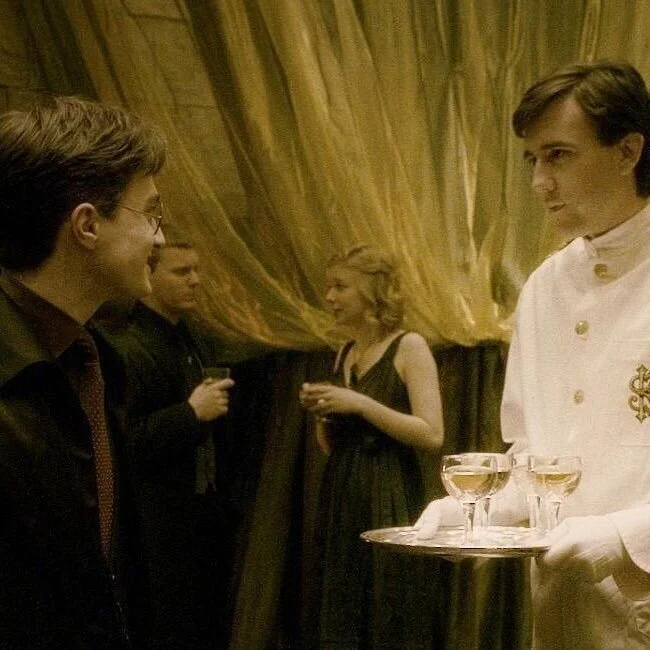Harry Potter & The Goblet of Wine
/For the past two years, my son and I have been working our way through all the Harry Potter books. The first four books were read while I was still under the influence of my daily wine habit. The fifth book we never finished, and so reading our way through the sixth book coincided with my own first year of rethinking drinking.
For neophytes to the Potter series, book six opens with Severus Snape pouring wine for a highly distraught Narcissa Malfoy, and then practically coercing her to have another once she’s nervously drained her glass. Since I have a heightened awareness of alcohol’s ever-presence in our world now, I was extremely uncomfortable reading this to my nine-year old son. I shrugged it off and we continued on.
The next chapter involves Dumbledore conjuring a bottle of mead and forcing Harry’s muggle family to drink it. The following chapter involves Professor Slughorn, who is notoriously a heavy drinker, pouring himself and Dumbledore wine. And so it goes on.
I started marking all the spots where J.K. Rowling uses alcohol as a narrative device with little “sign here” tags I stole from my desk during my corporate days. I explained to my son why I was doing this, and now gratefully, he never lets me miss a reference.
Why is this important to highlight and not dismiss? Books and literature are a huge force in cultural conversations, and have always been an influence on people and thinking. I’ve spent a lot of time in the past year and a half, going around in circles about how and when people start being influenced to drink at every occasion and how to change that. As I’ve been reading through this book with my child, I can see how the silent tentacles of drinking culture embed themselves in people’s minds. Children adore and try to imitate beloved characters in the books they read, as any parent with a Potter-obsessed child can tell you.
By the end of the book, there were almost four dozen blue and red flags sticking out from the side of the book. I look at it, and all I can think about is how a children’s book is not only normalizing drinking amongst adults but normalizing the exposure of drinking to children as well (both fictional characters and real children, but don’t go down that meta rabbit hole). Spoiler alert: Ron Weasley (age 16) almost dies after chugging a poisoned bottle of mead.
I am not a child psychologist. Perhaps someone wiser than me will be able to assure us children are able to process and understand these situations as fiction. What I do know though, is that I chose to rethink drinking, ditched an unhealthy habit despite societal norms to imbibe, and am now the better for it. I will fight with my life to educate and protect my children from its harmful influence, and I think much of it starts with what we read.
© Some Good Clean Fun




